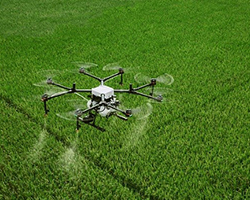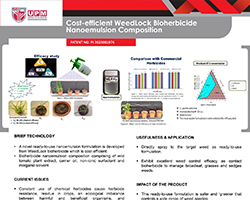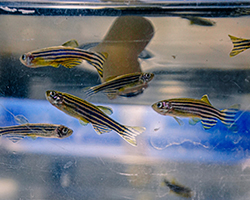|
IT seems that farmers in the northern region of Peninsular Malaysia worry more about dry spells or droughts that affect their rice yield than the Covid-19 pandemic. They are worried about the rice in fields that generate adequate income to sustain their life. This was articulated by some writers in the mainstream media last week.
The concern by the farming communities is real, given the serious shortage of water to sustain rice growth and production in the Muda Agricultural Development Authority (Mada) area of Kedah-Perlis plains, the main granary of the country. We are talking about the country's food security, which is being threatened to the core by the recent drought in the region.
As a senior soil scientist working to help enhance rice production to sustain food security, I am worried about the situation. No matter what we do, if there is insufficient irrigation water, the agro-technologies we have developed are of little use, unless there is a rice variety available in the country that can withstand without much water during the vegetative stage. What has gone wrong with the climate in Peninsular Malaysia of late?
To put it in proper perspective, I made a visit to the area in mid-March. The visit was to start a research project with farmers in Pendang, Kedah, who wanted to participate in the project. Sad to say that water was lacking in some areas that rice plants in the fields were left unattended.
The rice plants turned brown due to insufficient water to support their growth. The plants could no longer grow or survive, let alone produce rice that the farmers were looking for. It was a sad end to farmers' dream of having a good harvest.
Based on the geological record, Kedah-Perlis plains were once inundated by sea water when the sea rose to its highest level some 4,300 years ago. During that period of the geological history, mineral pyrite (FeS2) was formed and remained in the sediments where the Mada area is.
That geological episode leaves a fingerprint that affects soil fertility. During dry spells, the water table level drops and exposes the pyrite, which is subsequently oxidised, releasing acidity and toxic iron. The phenomenon affects rice production negatively.
This seems to be the case in certain rice fields in Pendang that I visited. The problem of high acidity and iron toxicity has to be rectified via agronomic means. The objective of my visit to Mada areas was to look for the best ways to do it. Alas, the project was put on hold until the Covid-19 pandemic is done and over with.
The rice self-sufficiency level (SSL) in Malaysia stands at 71 per cent. With the improved infra-structure put in place, the SSL is expected to be increased to 80 per cent by 2022. The drought situation in Mada areas right now is made worse by the Covid-19 pandemic.
With the problems facing the farmers, I hope Malaysia can still sustain the SSL at 71 per cent. The powers-that-be should have already started working to alleviate the problem facing the rice farmers.
Recently, the government invited researchers nationwide to submit research proposals for Trans-disciplinary Research Grant and Long-term Research Grant Schemes. Among the 14 areas of research offered for full funding is "Impacts of 1.5-2.0°C Global Warming on Malaysia". This shows how important is the impact of global warming on the economic wellbeing of Malaysians.
The phenomenon of water shortage for rice production is unprecedented in the history of Malaysia. Water in dams at the upper reaches of rivers is almost dry due to the lack of rainfall. It has much to do with the change in weather patterns, the so-called global warming.
Global warming is of great concern among those in the agriculture fraternity across the globe. It is accelerated by the increase of carbon dioxide (CO2) concentration in the atmosphere.
We have more than 400 ppm of CO2 in the atmosphere, almost double in amount compared with that before the industrial revolution.
The worldwide increase in the Earth's surface temperature has already reached the alarming level of 1.5°C increase in the Earth's surface temperature to 2°C.
|




























